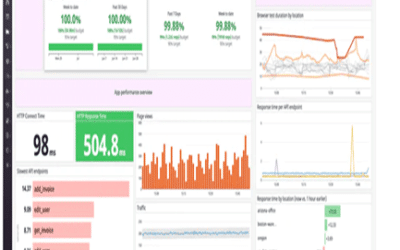In today’s fast-paced development world, developers often use third-party components to create applications. With the countless libraries out there, it is much easier for development teams to go out and find pre-built components, rather than building them from scratch.
With so many developers going out to find open source components to add to their projects, a modern application contains on average 85% open source code. What does this mean for your organization? Basically, it leads to a situation where others have “packed the suitcase” of your software, but you don’t know what they have put inside it.
Not knowing what’s inside your applications can lead to a number of problems. If you don’t know what’s inside your software, you don’t know which pieces of your software are security vulnerable, or you could be violating the licensing requirements of the creators of the third-party components without even realizing it, leading to reputational damage or lawsuits.
It is inevitable that your applications will contain a variety of open source components at this point. Therefore, building a software bill of materials is the next step to gain knowledge about what’s inside them.
What is a software bill of materials?
In essence, a SBOM (Software bill of materials) controls each of the components used within your applications. It serves as an inventory of the third-party code snippets that your development team has incorporated into the software. An SBOM not only lists component names, but also details such as: license information, version numbers, and vendors.
Software Bill of Materials Utilities
The benefits of an SBOM quickly surface in the day-to-day operations of an organization. Here are some use cases where maintaining an SBOM helps save time and resources, and keep your organization safe from security vulnerabilities.
Mitigating critical zero-day vulnerabilities.
When the critical 0-day Log4j vulnerability was announced in December 2021, many of us felt its impact. Organizations urgently needed answers to two questions about their applications: WHERE do we use Log4j, which applications contain it, WHICH version do we use (the vulnerable one or an earlier or later version)?
With an SBOM, these questions can be answered in a matter of minutes. If you can look at an inventory of your components, you can find out where the vulnerable component is located and quickly decide how to protect those specific areas.
License compliance requirements
Open source components are often subject to specific licensing requirements. Failure to comply with these licenses can lead to reputational damage, lawsuits and more.
An SBOM enables your company to avoid moving non-compliant software into production by bringing the details of each open source component into a central document.
Transparency and customer confidence
An SBOM creates transparency about your software that customers can trust. By showing what’s inside your tools, you are investing in your customers and their well-being, leading to loyalty and repeat sales.
Better development cycles
SBOMs directly benefit development teams by streamlining several aspects of the SDLC.
For one, it minimizes code overload, which manifests itself in slow, bulky software. By knowing what’s inside applications, your team can identify different components that perform the same function and eliminate redundant or unnecessary parts.
In addition, when the security team detects vulnerabilities, developers no longer have to spend time looking for the code in question. Instead, they can use the SBOM as a “table of contents” to locate vulnerabilities.
Replacing outdated and unsecured components.
Like the food in your refrigerator, software components have “expiration dates” known as end-of-life (EOL) stage. Once they have reached this point, components stop receiving vendor support with critical updates and security patches.
With an SBOM, it’s a quick process for your team to find these “expired” components and identify replacements.
Ready to get started with your software bill of materials and reap the benefits of maintaining a detailed inventory of your open source components?
Find out more about our partner Sonatype and how they help companies create software BOMs with their comprehensive approach to software composition analysis.
Find out more:




